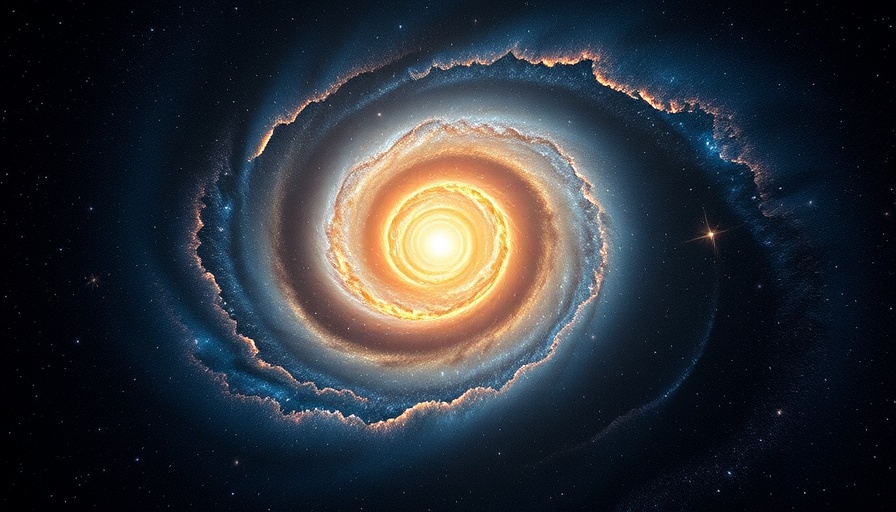
The Unveiling of UGC 11397: A Glimpse into Cosmic Wonders
The Hubble Space Telescope has once again pushed the boundaries of our understanding of the universe with its recent image of the active galactic center in UGC 11397, a spiral galaxy located 250 million light-years away in the constellation of Lyra. At first glance, UGC 11397 might appear like any other spiral galaxy with its beautiful arms and starry appearance. However, it harbors a supermassive black hole at its core, boasting a mass 174 million times that of our sun.
The Dazzling Dance of Matter Around a Black Hole
This black hole plays a fascinating role in the galaxy's dynamics, drawing in gas and dust while also consuming entire stars. As this material spirals into the black hole, it heats up and emits light across a spectrum from gamma rays to radio waves, creating an extraordinary light show in the cosmos. This phenomenon primarily occurs out of our view as thick clouds of dust obscure much of the energy emissions in visible light.
How Hubble Revealed Hidden Activities
Yet Hubble’s ability to capture bright X-ray emissions allowed astronomers to classify UGC 11397 as a Type 2 Seyfert galaxy. This classification is significant as it indicates an actively growing black hole largely concealed from optical observations, highlighting both the limitations and capabilities of our astronomical tools. The dazzling light emitted by the black hole reveals a great deal about the energetic processes at play and allows scientists to study hundreds of similar galaxies seeking to understand the behaviors and growth patterns of supermassive black holes.
The Broader Implications for Astrophysics
What's particularly striking is that observing these active galactic centers isn't just about cataloging images of beautiful cosmic structures. Researchers believe these observations are pivotal for a wider understanding of galaxy formation and the early universe. By studying the supermassive black holes at the centers of galaxies like UGC 11397, scientists can gauge how these tremendous forces have shaped the cosmos throughout history.
Conclusion: A Journey Toward Understanding
The insights gained from Hubble’s latest capture of UGC 11397 could lead to significant breakthroughs in astrophysics. With further research, we are on the brink of unlocking mysteries about the formation of black holes, star formation in extreme environments, and the very structure of our universe. As we continue to glean information from these cosmic treasures, we can only imagine the depths of knowledge yet to be uncovered.
 Add Row
Add Row  Add
Add 




Write A Comment